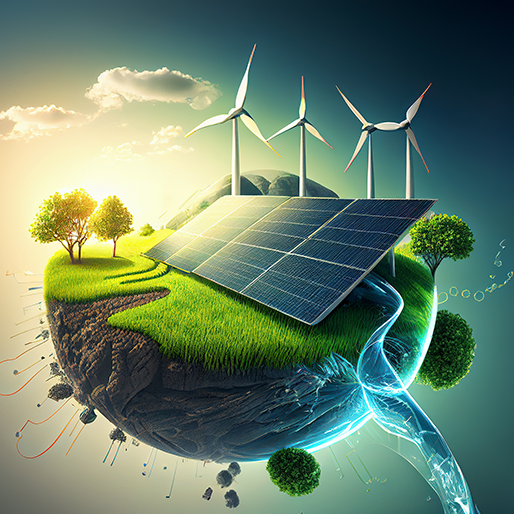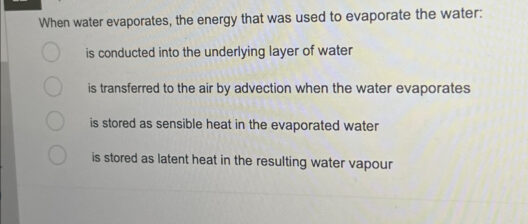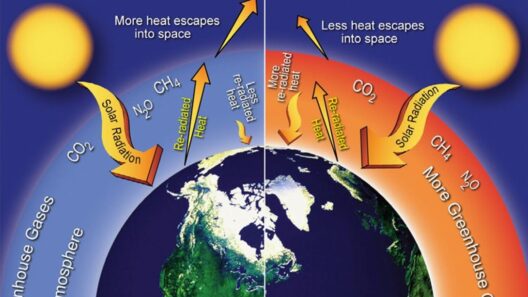Climate change has become an omnipresent specter threatening our world. With the dire warnings of scientists ringing in our ears, understanding the mechanisms at play is crucial. One of the most intricate and perhaps underappreciated aspects of climate science is the phenomenon of climate feedbacks. These feedbacks, akin to echoing chambers, are the hidden forces that amplify the effects of global warming in potentially devastating ways. Grasping their intricacies invites a profound shift in perspective and enhances our appreciation for the delicate balance of Earth’s systems.
To comprehend climate feedbacks, one must first recognize the distinction between climate drivers and climate feedbacks themselves. Climate drivers, such as greenhouse gas emissions from anthropogenic activities, initiate warming. Conversely, climate feedbacks are secondary phenomena responding to these drivers, subsequently either exacerbating or mitigating the initial warming. Herein lies the conundrum: certain feedbacks can escalate climate change to alarming levels, creating a cascading effect that can spiral beyond control.
The most notorious climate feedback is the ice-albedo feedback. As global temperatures rise, polar ice and glaciers melt. This phenomenon, while seemingly straightforward, unveils a complexity that has far-reaching implications. Ice and snow possess a high albedo, meaning they reflect a significant portion of incoming solar radiation. When these reflective surfaces are replaced by darker ocean or land, they absorb more heat, further accelerating warming. This process not only contributes to the decline of polar habitats but also triggers a self-perpetuating cycle of ice loss and temperature increase—an alarming trend with profound implications for global sea levels.
Another pivotal feedback mechanism is the release of methane—a potent greenhouse gas—by thawing permafrost. The Arctic permafrost, a frozen layer of soil, traps vast quantities of organic material. As the climate warms, this layer thaws, releasing methane into the atmosphere. Methane is over twenty times more effective than carbon dioxide at trapping heat over a hundred-year period. The realization that our warming planet can unleash these dormant reservoirs of greenhouse gases is a sobering thought, amplifying the urgency with which we must address climate change.
Additionally, the water vapor feedback presents another layer of complexity. Warmer air holds more moisture, and water vapor itself is a powerful greenhouse gas. As temperatures increase, evaporation rates rise, resulting in increased atmospheric humidity. This enhanced concentration of water vapor not only amplifies the greenhouse effect but also influences weather patterns, potentially leading to more extreme events—droughts in some regions and intense storms in others. The duality of water vapor as both a result of warming and a contributor to it exemplifies the tight interconnections within the climate system.
The role of clouds in the context of climate feedbacks is equally paradoxical and complex. Clouds can exert both warming and cooling effects, depending on their type, altitude, and extent. Low, thick clouds tend to cool the Earth by reflecting sunlight, while high, thin clouds can trap heat. As the climate changes, shifts in cloud formation and behavior may either mitigate or exacerbate warming. This unpredictable influence makes forecasting climate scenarios exceedingly challenging. Each new study reveals that variations in cloud cover can have significant climatic repercussions, leading to altered precipitation patterns and temperature fluctuations.
The implications of these feedback mechanisms extend beyond temperature increases; they also affect global ecosystems and biodiversity. Changes in climate feedbacks can disrupt natural cycles, with knock-on effects that can lead to habitat degradation, species extinction, and altered migratory patterns. For instance, shifting temperatures and precipitation patterns can threaten food security as agricultural zones move or diminish, with cascading socioeconomic impacts.
Furthermore, the socio-political ramifications of climate feedbacks cannot be undervalued. As the impacts of climate change proliferate, the pressures on resources—water, food, land—intensify. Increased competition for dwindling resources can lead to conflicts, displacement, and a strain on governance systems. Understanding that these feedback mechanisms are not simply scientific phenomena but active forces in shaping global human affairs underscores the importance of integrating climate science into policy and decision-making.
However, not all feedbacks lead to dire consequences. Some feedbacks can, in fact, drive positive change. For example, the increase in global awareness and action against climate change can catalyze technological advancements and policy reforms, leading to a decrease in greenhouse gas emissions. Renewable energies gain traction as a result of heightened awareness, and carbon capture technologies emerge in a bid to mitigate the impact of historical emissions. The act of fostering innovation and encouraging sustainability can create a feedback loop of its own, driving humanity toward a more resilient and adaptive future.
In summary, climate feedbacks represent the intricate webs of interaction within Earth’s climate system, illuminating the myriad ways in which warming can spiral out of control. As the scientific community continues to unravel these multifaceted processes, it becomes increasingly apparent that understanding these feedbacks is essential for effective climate action. They are not isolated events but interconnected phenomena that underscore the urgency of adapting to, and mitigating, climate change. This narrative demands a shift in perspective—we must recognize our role as stewards of the planet amid escalating environmental crises, prompt action to mitigate our impact, and champion innovations that align with the resilience of our ecosystems.
Ultimately, the challenge remains how best to utilize this knowledge to foster societal resilience and inspire action on an individual, community, and global level. By comprehensively addressing both the mechanics and consequences of climate feedbacks, humanity may harness a newfound perspective—One that evokes curiosity and compels transformative action in the face of an uncertain future.







